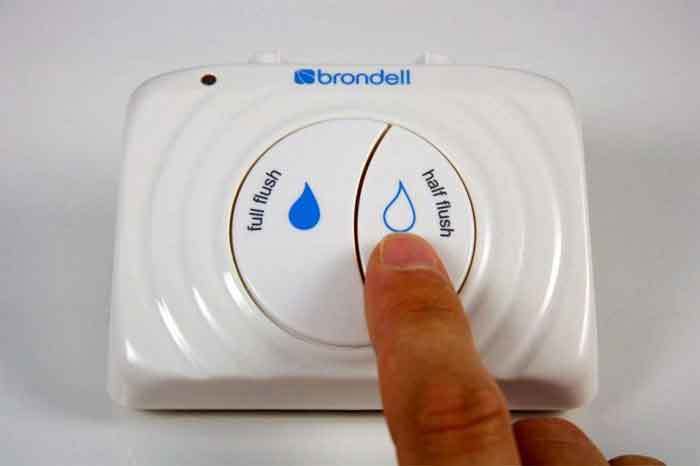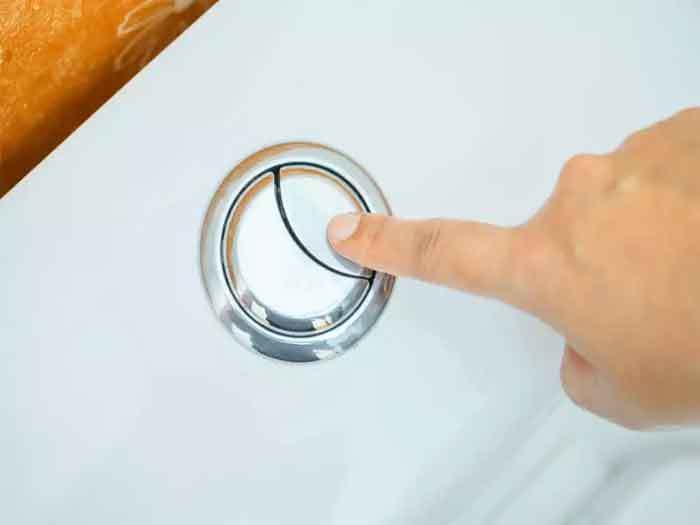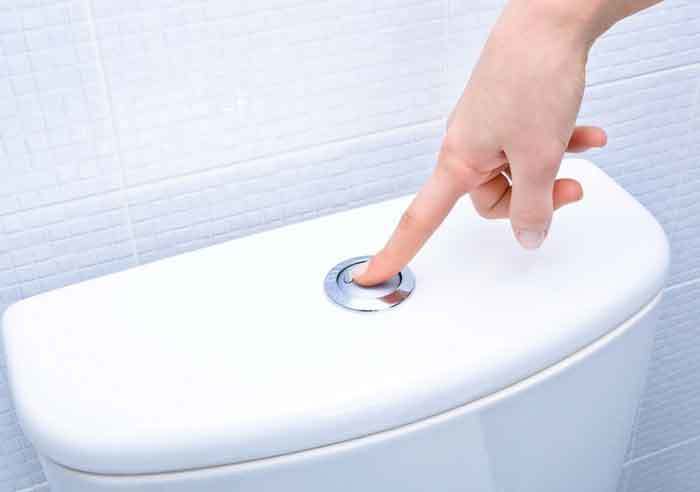Disclaimer: This post may contain affiliate links, meaning we get a small commission if you make a purchase through our links, at no cost to you. For more information, please visit our Disclaimer Page.
The invention of High-Efficiency Toilets made a big difference in water consumption lowering. Instead of old toilets which used to flush 5 gallons of water each time, modern toilets use up to four times less water per flush.
This is very important since in some countries toilet water available for use is limited for each household, and by adding the Dual Flush toilet system, water consumption can be significantly improved in terms of using just enough amount of water per each flush.
On the other hand, if your country has overtaxed water usage or you simply want to spend much less water on toilet duties, this system is the best way of doing so.
The Dual Flush toilets are convenient in more ways than one, and even reduce the chance of your toilet getting clogged.

What Makes Dual Flush Toilets Different and Unique?
There are many advantages these toilets have that the low-flush toilets don’t.
The hole in the bottom of toilets with dual flush is bigger, so the waste easily flushes through it.
The Dual Flush toilets have two different lever buttons and each one has its exit valve. There is no siphon action employed and the flush down design washes the waste down the drain easier so less water is needed for a flush.
In most cases, one button is bigger and one is smaller for two different types of flushes. The new Dual Flush toilets use 6 liters of water when you press the bigger button for solid waste and only 3 liters for liquid waste when the smaller button is used.
Related: How Much Water Does it Take to Flush a Toilet?
One of the big advantages that this type of toilet has is a smaller button for liquid waste. By the addition of this button, water savings were raised significantly for a regular family.
This was because for the first time you had an option of flushing less than half of a normal flush when you only need to flush liquid waste.
Before this, a regular toilet flush was needed each time, no matter how water the waste required to be flushed, so nowadays by using Dual Flush toilets, you can save a small flush each time you use the smaller button since now you have an option to flush less water.

Types of Dual Flush Toilets
When it comes to choosing the right Dual Flush toilet type, you can't really make a big mistake since there are only two main types of Dual Flush Valves:
Toilet Syphon Valve
This valve is controlled by a toilet handle. The handle on your toilet will enable you to choose between dropping half of a flush or dropping full flush for handling the waste.
This valve can be operated by a lever as well. Inside this system, there are supposed to be the fill valve and the flush valve.
The first one will fill the water up to the desired level, while the flush valve is transferring the water from the system and into the toilet when flushing.
Dual Flush Drop Valve
This valve is operated by push buttons or lever handles. This option can also be installed and upgraded on an ordinary toilet.
The principle is quite simple, there are in most cases two flushing buttons, the smaller and the bigger. To use the half of a flush option, press the smaller button, and for full flush press the bigger button.
In some cases, there will be a water drop or half of a circle drawn on the smaller button for easier recognition and use.
Why do Dual Flush Toilets Handle Waste Better?
When we mentioned the reasons people switch to Dual Flush toilets, there is one more thing in which the Dual Flush toilet beats the regular American toilet. That factor is the waste handling.
A regular toilet comes with the siphon tube which fills with the water and waste when the flushing action is causing the bowl to be filled with water.
When the air enters the tube, the water filling in the tube stops, and the process is repeated over and over again.
On the other hand, Dual Flush toilets do not use a siphon tube method since a large amount of flushed water is necessary to fill the tube and to move the waste through it.
Instead, the Dual Flush toilets have a larger toilet trap, which is a hole through which the toilet water and waste move.
Because of this, less water is needed for the flush to work and combined with the ability of flushing only half of a flush makes Dual Flush toilet much more convenient for use, and able to save nearly 60% more water than the regular toilet.

The Convenience of Dual Flush Toilet Usage
The Dual Flush toilets are operated very easily by using two buttons for different amounts of water being flushed, sometimes there is one button on top of the water tank, which is divided into two parts.
By pressing the smaller part you will get the same effect as pressing the smaller button on that type of usage.
On the lever-operated Dual Flush toilets, lift the handle for a small flush, or push it down for a full flush option.
Dual Flush toilets are more hygienic to use as well.
Most handle-operated Dual Flush toilets come with the green anti-bacterial coating for the handle. This way you will avoid getting certain kinds of diseases that you could pick up by touching a regular toilet's handle.
Upgrading an Ordinary toilet to a Dual Flush
In case you are generally satisfied with your toilet, and the only thing you would like to change is water consumption, you can also upgrade your existing toilet to be a dual flush one.
This can be done by removing the siphon tube and installing a dual flush drop valve.
The only difference is that upgrading can be a little bit difficult so you would need to hire a professional plumber to accomplish this process.
This could cost you more but if you find an affordable plumber you should still manage to make a Dual Flush toilet out of your regular one.
In the end, affordable new Dual Flush toilets can be found for a very reasonable cost, so you won’t spend too much on a toilet while it should return to you as water savings which will pay off the Dual Flush toilet in just a year or two.

Conclusion: On Dual Flush Toilets
The water you use in your toilet is in fact reusable. After flushing, the water enters your household's sewer system and after that, it goes to the municipal sewer line.
The water goes to the groundwater, later on, evaporates and rains down again so you don't literally spend that water. Nevertheless, all of us need to reduce our water consumption since there are more and more people in the world every day.
Some live in areas where water is in short or limited supply, others use too much water unnecessarily, while others are looking to lower toilet water consumption for economic reasons.
Either way, older toilets now have no purpose since it is important for all of us to save as much water as we can, and by upgrading your ordinary toilet or buy a new Dual Flush, you will get a much more appropriate water usage, while you have very little to lose.
